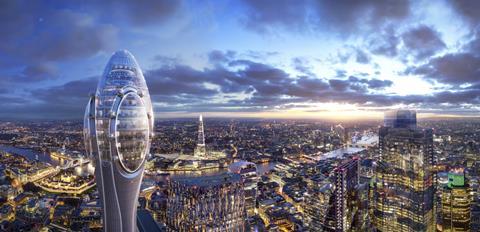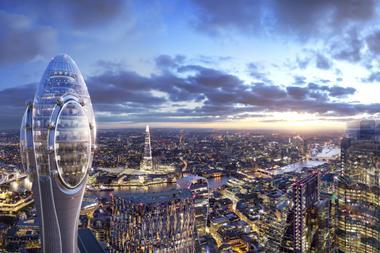The latest new building proposed for London, to be known as The Tulip, could provide a fitting epilogue for London’s role in the financial markets.

Socionomists recognise a link between grand infrastructure projects and financial markets. Such projects have historically tended to happen after a long positive social mood trend, as reflected by rising stock market indexes. The Empire State Building in New York is the iconic example. Built during the Great Depression but planned at the top of the ‘roaring 20s’, it serves as a monument to blind optimism.
Last week, plans were submitted for the construction of a 305-metre-tall tower shaped like a giant tulip in the heart of the City of London. The building would serve as a visitor attraction, with the ‘bulb’ of the tulip at the top acting as viewing areas.
It would become the tallest building in the historic City of London, although it would be two metres shorter than The Shard on the other side of the Thames.
The Shard is the tallest building in the UK (and indeed the EU) and was completed in 2012, the same year the London Olympics took place. Host cities of Olympics have a history of decline after years of build-up.
Six years have passed since London 2012 and in that time, the UK All-Share Index has significantly underperformed the rest of the world. London’s reputation as a financial centre is now under threat as Britain leaves the EU.
We suspect the architects behind The Tulip are giving a nod to the famous European Tulip Mania of 1637. Even if the building is never completed, there may be no more fitting end to such a long trend toward positive social mood in the UK.






























No comments yet